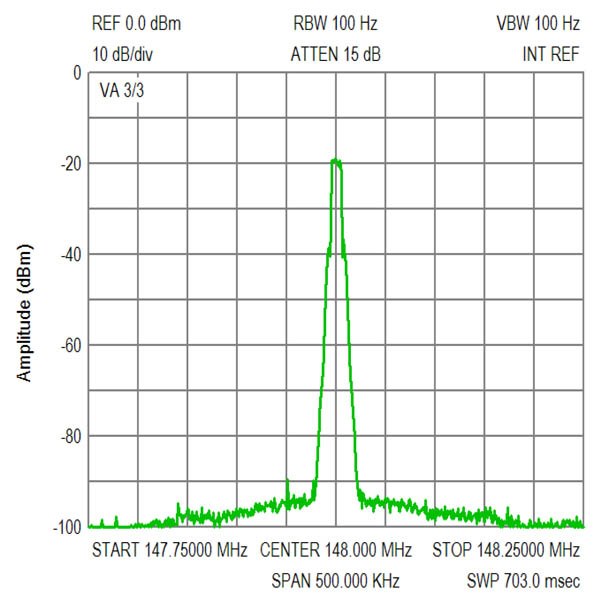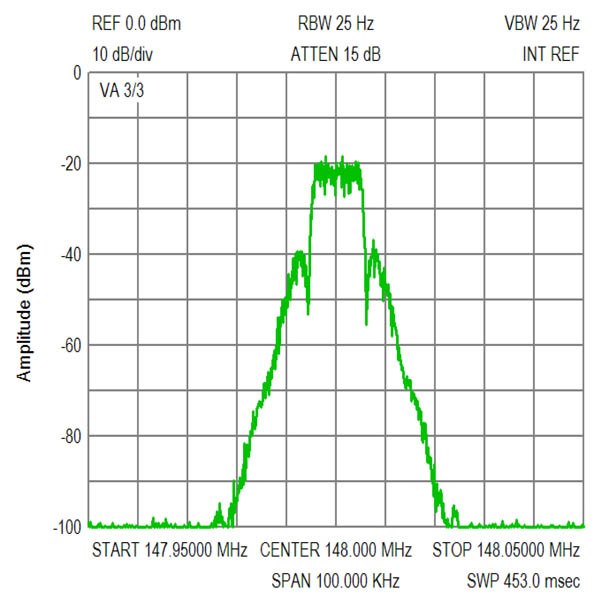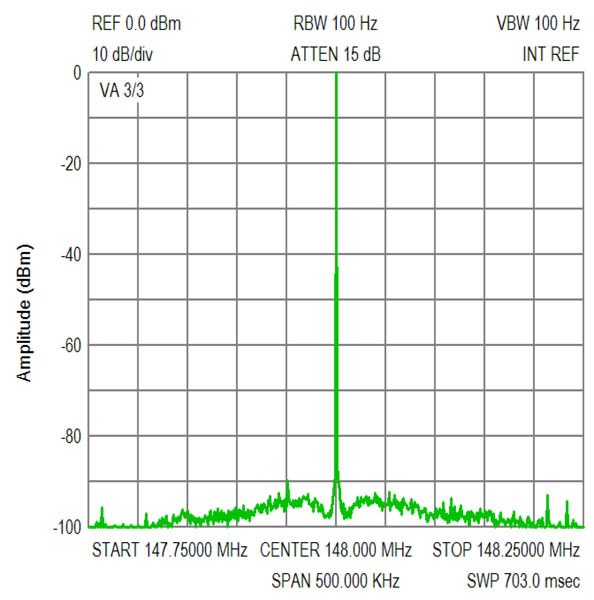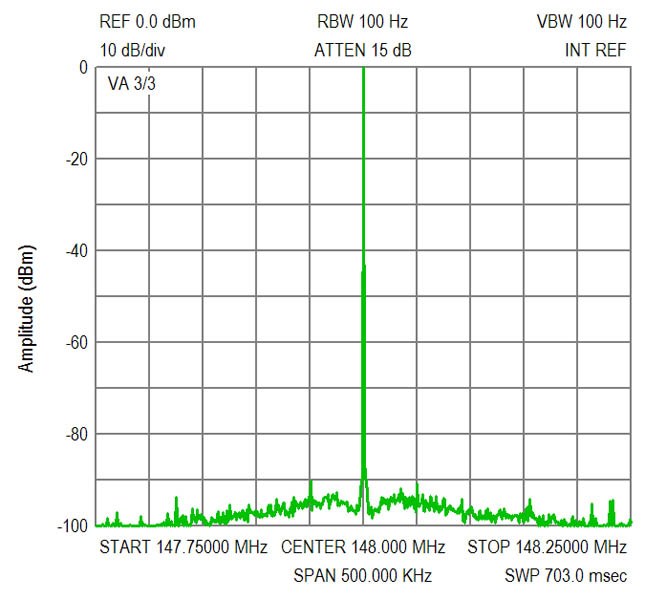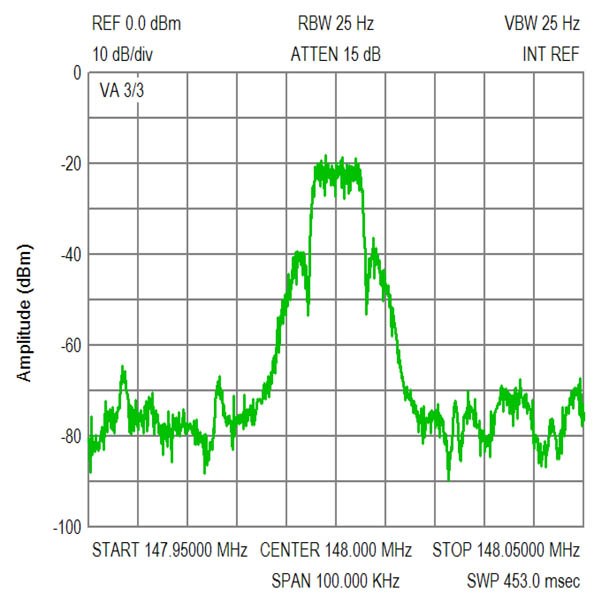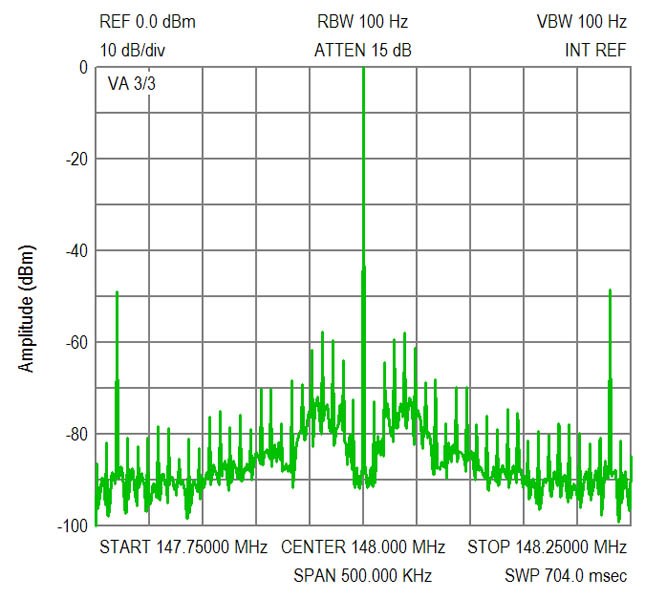Other Parts Discussed in Thread: LMX2572
Hello
I've choose LMX2572LP for my project and have met weird situation.
I use frequency band - 137..175 MHz, arbitrary FSK I2S modulation with symbol rate - 9600 bps, and sampling rate - 230.4 kHz (24 samples per symbol).
It works perfect if selected VCO isn't VCO4. I've made some screenshots to show the problem. Conditions are mentioned under each picture.
First - 148MHz, VCO forced to VCO3.
pic.1 NVCO=3, I2S_On, FSK_EN=1, INPIN_IGNORE=0, SPAN=500kHz
----------------
pic.2 NVCO=3, I2S_On, FSK_EN=1, INPIN_IGNORE=0, SPAN=100kHz
-----------------
pic.3 NVCO=3, I2S_Off, FSK_EN=0, INPIN_IGNORE=1, SPAN=500kHz
----------------
pic.4 NVCO=3, I2S_On, FSK_EN=0, INPIN_IGNORE=1, SPAN=500kHz
===========
Second four pictures - the same condition, 148 MHz, but VCO auto calibrated to VCO4
pic.5 NVCO=4, I2S_On, FSK_EN=1, INPIN_IGNORE=0, SPAN=500kHz
------------------
pic.6 NVCO=4, I2S_On, FSK_EN=1, INPIN_IGNORE=0, SPAN=100kHz
--------
pic.7 NVCO=4, I2S_Off, FSK_EN=0, INPIN_IGNORE=1, SPAN=500kHz
-------------
pic.8 NVCO=4, I2S_On, FSK_EN=0, INPIN_IGNORE=1, SPAN=500kHz
As you can see - if VCO4 is used - there are very high sampling rate spurs and common noise floor, even if FSK disabled, but host I2S pins remain active,
And these noise and spurs disappear, only if host I2S pins set inactive.
Sadly most of my frequency band falls into VCO4.
So the question is - how can I realise my FSK I2S in my frequency band?


